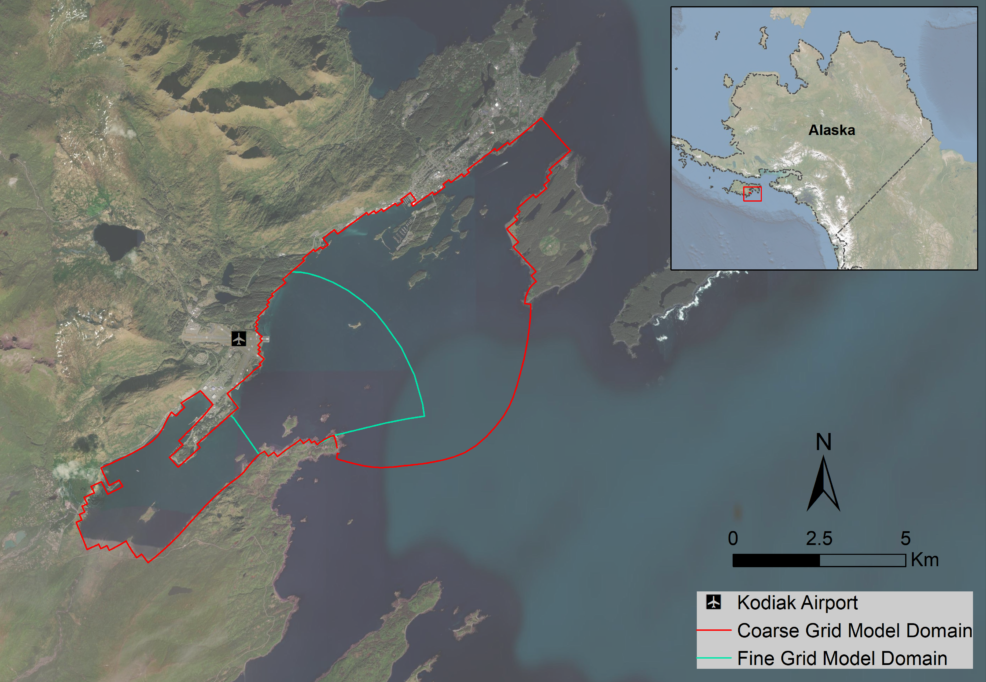
Coastline Engineering
From 2009 – To 2012
Construction completed in October 2015

President and Senior Consultant
pmcraig@dsi.llc
The City of Kodiak is located in St. Paul Harbor, one of several bays inside Chiniak Bay on the eastern side of Kodiak Island. It lies 250 miles south-southwest of Anchorage and its nearest distance to the Alaska mainland is 70 miles to the WSW. Kodiak Island is the largest island in the Kodiak Archipelago and the second-largest island in the United States. As part of a Runway Safety Area Improvement Alternatives Study (RSAIAS) to bring the Kodiak Airport (ADQ) into compliance with FAA regulations, DSI aided in the development of an Environmental Impact Statement (EIS). The FAA issued a Record of Decision for the project in September 2013, and a design alternative was selected for construction. Construction was completed in October 2015.
Several alternatives were considered to modify the airport runways. The numerical modeling study sought to determine the existing coastal circulation patterns and evaluate the changes and impacts due to the runway extension alternatives.

Model Domain for Kodiak Airport Study
To address the various runway extension alternatives, DSI developed a base case model and modified it to represent the filled/dry land areas for each alternative while keeping the remaining grid identical. A large-scale model was developed using data from four ADCP’s that collected data for a 32- day period. The model was calibrated to stage and velocities from the ADCPs. Once the larger scale model was calibrated, a fine-scale model for the region around the airport was developed for the detailed assessment of the nearshore currents. Impacts of flows and bed shear stresses were compared between the various runway extension alternatives. Additionally, an evaluation of impacts due to surface waves was conducted using a fine and coarse modeling grid with the SWAN model.
DSI provided the final modeling report to the client and the results of this assessment were incorporated into the 2012 Final EIS. The project was approved for construction by FAA in 2013 and completed in 2015.